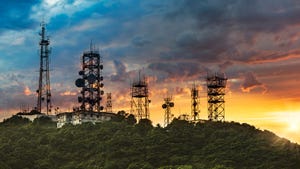Scotland and Wales top the broadband not spot list once again
While there might be a few rogue entries into the UK broadband sh*t-list, the usual suspects are present once again demonstrating the difficulties in taking everyone across the digital finish line together.
January 22, 2019

While there might be a few rogue entries into the UK broadband sh*t-list, the usual suspects are present once again demonstrating the difficulties in taking everyone across the digital finish line together.
The digital divide might not be on the same scale or intensity as some other continents are facing, but it is still a genuine problem for some regions in the ‘developed’ markets. Which has unveiled its latest list of connectivity not-spots throughout the UK, and unfortunately for those who like the peace and tranquillity of the countryside, the Eden comes with the sacrifice of connectivity.
The Orkney Islands in Scotland were the worst offenders for connectivity, with average speeds hitting a whopping 3 Mbps, though Allerdale, the Shetland Islands and Moray were also representing Scotland at the top (or bottom). Ceredigion and Powys, as well as Fermanagh and Omagh contributed to the Welsh representation.
While there might be constant reminders that digital equality is top of the list for politicians, the consistency of the worst offending areas just shows how difficult it is to solve the problem. The government might well have its Universal Service Obligation to wave in the face of the operators, but that seems to be having little effect.
Interestingly enough, previous reports have pointed towards the availability of higher speed broadband packages in these areas. Research such as this from Which can bemoan the lack of proactiveness from the telcos, pompously demanding that broadband is a right for all, but you can only lead a horse to water. Ofcom has previously stated only 45% of premises have signed up to superfast broadband packages, despite the option being available.
On a side note, the research also includes figures on how long it would take to download movies, music and other content at each of the speed tiers. Perhaps this is a measurement we should stop using to denote better or worse broadband speeds considering how many people are now streaming content rather than downloading it.
Your correspondent cannot think of the last time downloading content was favoured over streaming in his household, and suspects more and more households would fit this trend. Perhaps it would be a more useful comparison to list speeds at which a satisfactory streaming experience could be achieved for one or multiple devices simultaneously? Or measurements which take into account latency?
Looking at some of the figures online, Netflix recommends a 3 Mbps connection for one standard-quality stream and 5 Mbps for a high-definition stream. Two simultaneous HD streams would need around 10 Mbps, while multiples continuing upwards in a fashion you would expect. Compare the Market estimates that for adequate Spotify experience, 0.160 Mbps is needed to desktop applications, and 0.96 Mbps for mobile. High-definition video calling requires an upload and download speed of at least 1.2 Mbps. Users will also have to take into account how many connected appliances there are in the home.
These are all minimum speed requirements, and there will be other factors to take into consideration, but this might be a bit more suitable in a world which is moving away from asset downloads and towards streaming.
About the Author(s)
You May Also Like








.png?width=300&auto=webp&quality=80&disable=upscale)


_1.jpg?width=300&auto=webp&quality=80&disable=upscale)


.png?width=800&auto=webp&quality=80&disable=upscale)